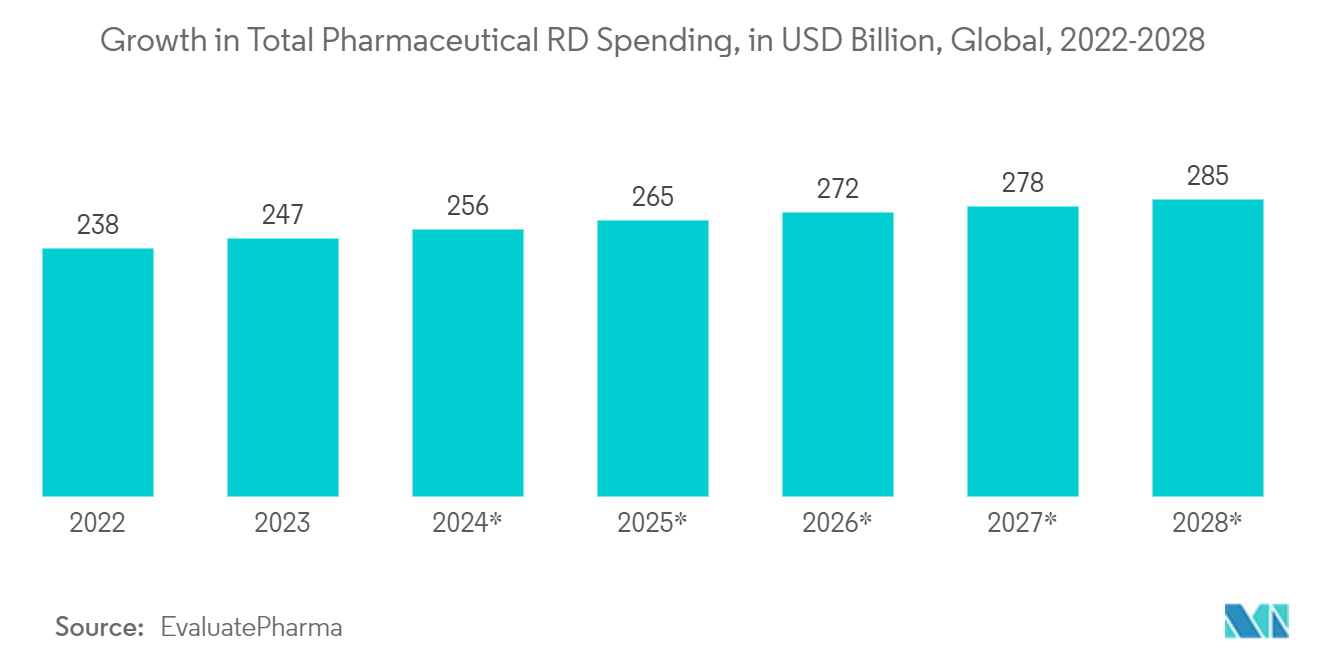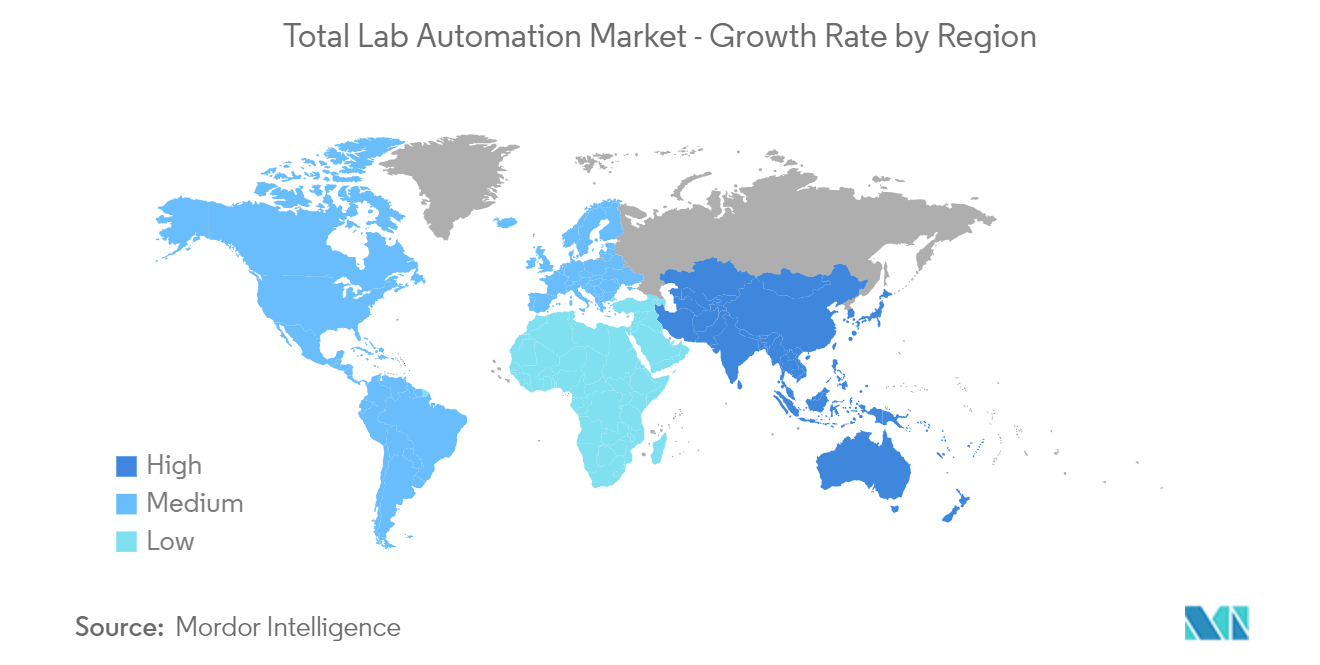Market Trends of Total Lab Automation Industry
Drug Discovery Application is Expected to Hold the Largest Market Share
- The advancement of drug discovery may benefit from using high-throughput compound screening since these findings, together with those from fragment screening and computer modeling, can increase researchers' understanding of their potential therapeutic candidates. Consequently, improving the therapeutic candidates with the best chances of succeeding in clinical trials and receiving FDA clearance may be possible.
- This can benefit scientists as it helps guarantee that time and resources are not squandered on developing ineffective medication compounds. Clever automation of portions and machine learning can help reduce unpredictability and mistakes within drug development. It may also guarantee a more efficient drug discovery procedure with greater productivity and advancement in compounds linked to affecting biological targets inside a disease area for which the medicine is being developed.
- The drug discovery process gets FDA approval through a few medications. Nonetheless, lab automation, which may lessen human error and offer algorithms to increase the possibility of effective compounds, might be a useful strategy for speeding up drug development and assisting academics and pharmaceutical firms.
- In December 2022, InsilicoMedicine launched Life Star, which was the 6th generation Intelligent Robotics Drug Discovery Laboratory. The fully automated AI-powered robotics laboratory performs target discovery, precision medicine development, compound screening, and translational research. The lab will allow Insilicoto to accelerate its end-to-end drug discovery further and optimize the development rate of its drug development as it moves its novel therapeutics through clinical trials.
- Additionally, the companies are largely investing in drug research and development, thus positively impacting the market studied. For instance, in June 2023, Sun Pharmaceutical Industries announced an increase in R&D investment in specialty and generics businesses. According to the firm, its current generics pipeline for the US market includes 97 ANDAs, while 13 new drug applications are awaiting the US FDA's approval.
- As the success of drug discovery labs lies in optimized workflows, countless hours and resources are often spent on physically preparing and loading drug discovery and testing plates into readers. To make this process more efficient, several automation solution providers are including automated plate readers. For instance, Parkin Elmer is a leading automation solution provider for laboratories. The company's VICTOR Nivomultimode plate reader enables the user to set up walkaway automation - increasing the overall efficiency of the lab and accelerating the drug discovery process.

North America is Expected to Hold the Largest Share
- North America is expected to register a significant share due to the presence of the United States, which is a country with substantial investments in clinical research. This country is home to some prominent pharmaceutical companies, like Pfizer, Novartis, J&J, GlaxoSmithKline, and Novartis. The government also has a significant contract research organizations (CROs) concentration. Some of the prominent CROs in the country are IQVIA, Laboratory Corp. of America Holdings, Syneos Health, and Parexel International Corp.
- The market is highly competitive in the country owing to the presence of all the major players in the industry, as well as stringent FDA regulations. To avail an advantage over competitors, the market players in the country are rising, adopting robotics and automation in labs.
- Additionally, microbiological labs in the region seek technologically innovative solutions to handle large numbers of samples and limited personnel resources. Some prominent manufacturers, such as BD Kiestra and Copan Diagnostics Inc., have been commercializing partial or overall lab automation systems for bacteriology in the US.
- The North American region has regulatory bodies, such as the Centers for Medicare & Medicaid Services (CMS), that monitor and regulate all laboratory testing performed on humans in the US through the Clinical Laboratory Improvement Amendments (CLIA), which includes 260,000 laboratory entities. This presents a potential opportunity for the lab automation providers, which may propel the market's growth over the forecast period.
- For instance, Kaiser Permanente Regional Laboratories automated its lab with automated and semi-automated plating instrumentation, as approximately 80 percent of the bacteriology samples handled by the lab are preordained for processing and plating. In addition to this, lab automation improved plating quality and minimized ergonomic injuries by automating monotonous manual functions. Such developments are expected to encourage other labs in the region to follow a similar level of adoption to remain competitive.


